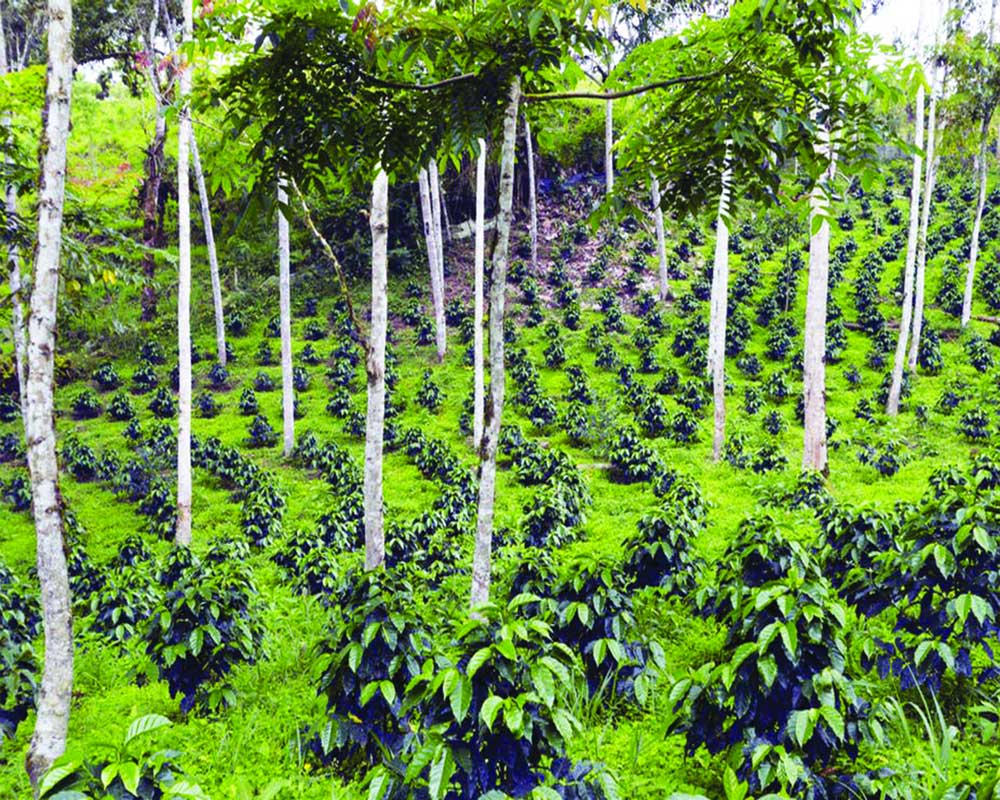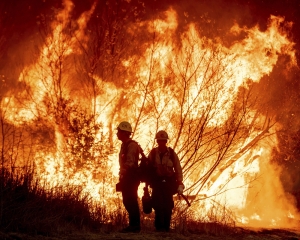Local problems require solutions based on different strategies. This is why the key person may or may not be a forester but one who links the community to the store of expertise and gets things done
There is an ongoing fierce debate in the country about successful strategies of natural resources management. At one end of the spectrum, we have the moral and political contract of Rousseau, where the Government has all the political legitimacy. Then there are views inspired by Hobbes, that individual actions are influenced only by their personal power and conscience. In the same vein today, we have staunch advocates of the predominant role of individuals vs the state in matters of management of forests, land, water bodies and other natural resources. The fact remains that poor forest governance can have significant negative impacts in development of outcomes on all the pillars of strategy, the environment, poverty-reduction and social development.
SD Richardson, late Chairman of Forest Education in the UN, once observed, “The greatest challenge in conservation is not the conservation of threatened or vanishing species or even biological diversity, it is the enhancement of soil fertility to enable sustainable development in a world reluctant to accept the steady state economics.”
One would like to add that there is no better means to maintain, sustain or enhance the productivity of the soil but for trees or perennial vegetation. Proper trees at the proper place are the key to maintaining, sustaining and enhancing soil productivity. This is also the answer to job-creation, reducing the disparity of income and for maintaining, or decelerating the rate of climate change, due to their unique capacity to sequester carbon.
Land is a finite and fragile resource in India. It requires a careful husbandry. The cost of soil erosion and degradation is seldom perceived because it is in various scales and magnitude. On site and off site, the cost of soil erosion can be loss of productive potential, reduction of infiltration rates, reduction in water holding capacity, loss of nutrients, increased tillage operation cost, reduced storage capacity of dams, reduced water supply and depletion of wildlife and so on. In case of rivers, health of forest greatly determines the quality and quantity of water. Riparian vegetation impacts metabolic functioning of biota. Branches and twigs often work as debris dams and often serve as important habitat.
There are large areas in India where sustainable agriculture is only possible with the aid of trees, whether as a part of crop rotation, shade providers or as a fodder. Trees have an important part to play in land restoration/reclamation. There are large areas in the country, particularly the so-called dry lands which have been so badly misused in the past that they are no longer capable of growing food and fodder for people who live and depend on them. In all these critical situations, their contribution will be decisive. This is about the most important job that trees have to do in India today.
Technological innovation in agriculture is often advanced as an answer to deteriorating productivity. Most “agricultural innovation” theses fail to explain why in many parts of the country, completely different technologies are being applied on lands, which are similar but adjacent. Small, independent farmers may be applying a traditional technology to sustain themselves right next to an adjoining stretch of land where modern, sophisticated technology is producing cash crops.
Similarly, it is oversimplification to regard deforestation/degradation as a consequence of population. Any incisive study or analysis of history will show that deforestation is nothing but manifestation of unjust social relations. In such a scenario, an area which promises great hope but also requires careful scrutiny is social forestry.
This connotes many concepts to many people, forests for socio-economic development, agroforestry, urban forestry, recreation forestry and forestry for rural development. These different names signify different functions of trees under different settings. But these reflect a growth of social consciousness about trees. But first what does social forestry mean? Though there is no clear or agreed meaning, it has come to cover any kind of forestry activity directed to social needs.
Agroforestry: A forester will often say that agroforestry has changed the landscapes in western UP, certain parts of Haryana and or Punjab. Yamunanagar in Haryana is a hub of forest-based industrial activity which served as a showcase of what agroforestry can do. The fact remains that the drylands of India constitute a unique challenge for development planning, observes economist Mihir Shah.
Biologists advanced various claims in favour of agroforestry like controlling soil erosion, maintaining organic matter, improving and maintaining the physical property of soil, addition of nitrogen, addition of mineral nutrition, reduction in soil acidity and alkalinity, addition biomass through tree root system, enhancement of mycrorhizal associations, imputed capture of rainfall and sunlight, control of damage from disease and so on. All can be true or untrue unless the choice of components, their arrangements and their management are optimised within an environmental conducive to it.
Agroforestry for sustainable agriculture: Agroforestry systems can provide several products, requiring different yardsticks for their measurements. They occur in different ways and on different scales of time and space. Different products may require different units of measurement. For example, crop per season, timber or poles after several years, non-timber forest products in different units; or tonnes of top soil saved, rainfall conserved. In short, both short and long-term benefits occur from different agroforestry systems (with tree-crop mixture). Short-term benefits occur in the shape of mulch and litter that affect root growth and the soil’s physical properties. Farmers need to be exposed to the fact that to measure a lasting benefit in natural capital, we shall have to consider time and space scale. Agroforestry can add to both efficiency, stability and resilience for sustainable agriculture, provided the benefits are considered in scale of time and space. Trees can influence beyond their immediate environment. Their roots may extend well outside their plots and trees on the upper side of the watershed affect downside farms, while trees in the valley affect the hydrology. Hence, while counting benefits of agroforestry, both goods and services need to be considered and there is no doubt that a right combination of trees and crops can be both efficient, resilient and sustainable. But agroforestry is not simply limited to a matter of solving technical problems. It is also necessary to understand the socio-economic and hence political context within which agriculture is practised. Research of this kind has become all the more important because day by day the area of land under traditional agriculture is dwindling and suitable use of trees can do so much to improve soil productivity. Such areas of research are just beginning to receive attention. Agroforestry at present is largely confined to the prosperous pockets of fertile land and the benefits are mostly accruing to rich farmers. How these benefits or gains get distributed among the landless, small farmers and contract labourers remain to be analysed with location-specific hard data.
There are various issues and innumerable location-specific problems and solutions that need to be addressed for which there is neither effective institution, nor capacity or proper policy instrument. The rural poor, who have either no land at all or insufficient land to support them, are increasing in number every year. The problem will not go away by ill-conceived schemes or absence of schemes. They can be mobilised to restore the land, water bodies or for the conservation of local biodiversity. City-trained extension purveying orders and advice to farmers often find their advice ignored. It makes more sense to convey new ideas through individuals chosen to represent them at their level of knowledge or literacy. What is required is total revamping or rejuvenation of the vanquishing ecosystem.
Recreation forestry: This is another dimension of social forestry, which requires careful nurturing, because its users are by and large opinion makers of society. They are influential, with ability to mobilise public/political opinion. The demand for outdoor recreation and social cohesion is catching speed and city dwellers love to get first-hand experience of forests. Forested landscapes in India are few and far from the reach of city and village dwellers. Hence, there is great demand for forested landscape for city dwellers like Kukrail in Lucknow, or other big cities. It requires skill, experience in anticipating the clear aim and the demands of the people or special interest groups, the finance to be put in and the returns.
Urban forestry: Is another conspicuous kind of social forestry, which has shown great potential and which is another pointer to social consciousness about trees. The main purpose of the urban forest is shade, screening and aesthetic. The composition of urban forested landscape is also often on socio-economic strata. Hardy and economically useful species are selected (such as moringa, neem, jamuns, eucalyptus) for slums or for low-income areas. People living in the slums are generally not bothered with trees except for a few species that provide fodder or shade for their temporary shops or homes. Urban forests of affluent areas generally have well-planted, well-tended trees. Urban trees are important for their benefits to city dwellers, climate amelioration and engineering, architectural and aesthetic uses. But except a few cities, management of urban areas generally reflects a lack of skill and experience, in addition to financing and proper monitoring and, of course, information, education and training of stakeholders.
Trees have manifold roles to play. Forest policy expert Bjorn Lundgren had rightly observed that there is a range of local problems that requires solutions based on different strategies. This is why the key person may or may not be a forester but the one who links the local community to the store of expertise and acts as a catalyst in getting things on the way. It matters little whether he/she is called an activist, village representative or what have you. It is through such people that foresters or others can gain an understanding of problems and suggest feasible solutions.
(The writer is former Principal Chief Conservator of Forests, UP and Advisor, Amity)


























